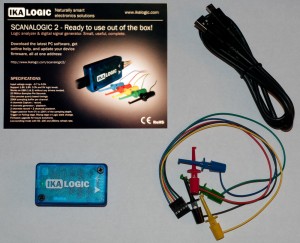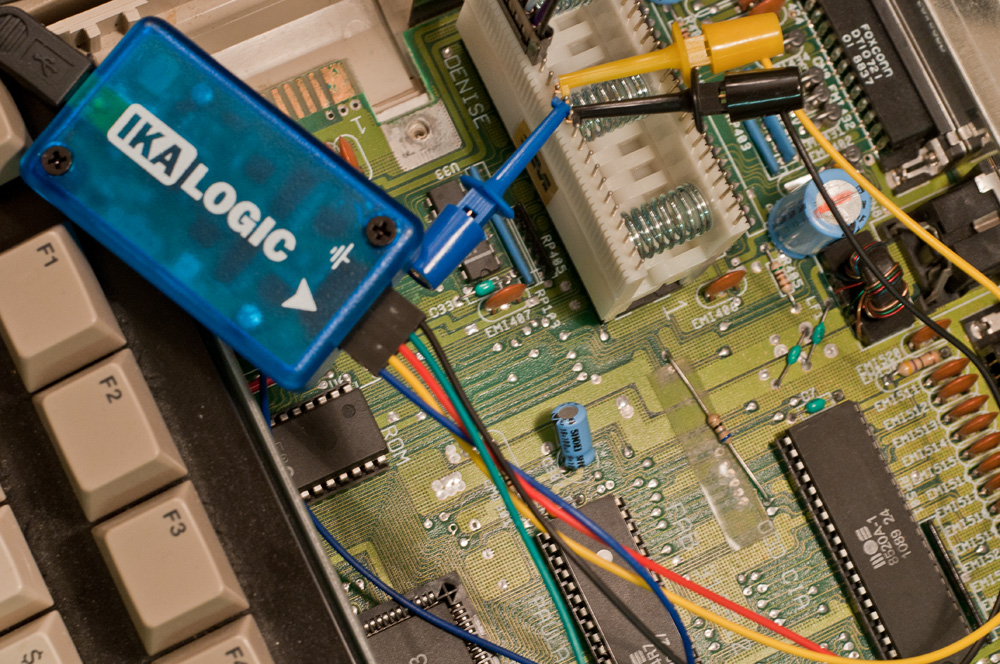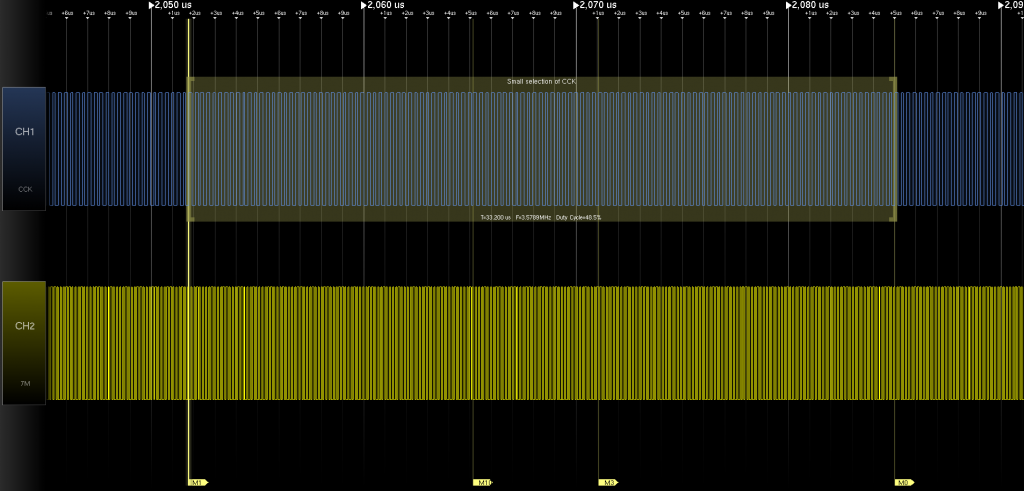As many of you know, I maintain a comparison page of sub$1000 logic analyzers here. I previously owned both a LogicPort and a Saleae Logic unit.
I just received in the mail an IKALOGIC Scanalogic-2 PRO logic analyzer. This is a small low-cost($79 via MCPros) logic analyzer which is about half the price of an 8-channel Saleae Logic.
The rough specs on the unit are:
- 4 channels (both for input, and for output (signal generation))
- 20 million samples per second
- 256K samples per channel
- Multiple serial decoders for SPI, I2C, 1-WIRE, UART, CAN, LIN,Manchester
- Multiple voltage support: 2V, 2.8V, 3.3V, 3.6V and 5V logic
- Free Windows-based ScanaStudio software
 It ships with the following stuff:
It ships with the following stuff:
* the small blue unit itself
* a multicolor 5-port lead with micrograbbers(including GND)
* a 3-ft USB cable
* a quick-start ~4″ x 6″ card
My source for the specs, manual, software, etc can be found at IKALOGIC’s site here.
The two screws holding the small plastic case together make it super tempting to pry inside and see the hardware that the scanalogic-2 is based on:
- Atmel’s 8-bit AVR, the 168PA microcontroller
- The LCX125, which is used for voltage conversion (not all too different from LCX245 used in my amiga VSC project.)
- (4) microchip 23K256, serial 256K SPI SRAM memory: one per channel, of course.
As is with the Saleae Logic unit, the 5-port lead that includes the micrograbbers isn’t polarized or keyed in anyway, which could lead users to accidentally connect ground to something they were trying to measure. They did include a “Probes Legend” in the Configuration / Device tab to help show the proper orientation of the cables.
I connected the SL2 (I can’t keep using the full name) to my Commodore Amiga, specifically the DENISE chip, to test it out. I hooked it up to two clocks, one called 7M on the YELLOW and CCK (color clock) on the BLUE lead.
Here’s an image of it in use: (Click for full size)
The micrograbbers were nice and attached quickly and securely.
The software ScanaStudio installed with no problems on my Windows 7 machine, and recognized the hardware as soon as I connected it without driver related problems. The software itself seems pretty clean, intuitive, and looks relatively well-designed.
IKALOGIC made the design decision to use the mostly driver-less HID class to interface the SL2. While this makes installation a breeze and limits driver issues, it also slows down the maximum transfer rate which means that post-acquisition, there is a delay of about 30 seconds before the data is displayed on the screen. The wait isn’t too bad, but other devices on the market are near-instantaneous.
The device works as advertised, and the software behaves as you would expect.
Here’s a screenshot of the SL2 in action:
In the above image, I recorded two clocks being provided to DENISE and then highlighted a section by selecting it. It shows the total time of the selection, the frequency, and duty cycle.
The software has some useful features like the ability to export a screenshot, export the data to CSV, export printer-friendly images, and so on. The triggering is simple (Falling, Rising, or Logic Change) on either ALL channels or an individual channel. There is also a neat auto-refresh mode where the device will periodically go out and make another acquisition.
I didn’t really play with the signal generation capabilities or the various signal decoders yet.
I contacted support for a couple minor issues, and the email response was lightning fast and addressed my issues completely…..
Overall, this is a small straight-forward, low-cost unit, which could help in many hobby projects. If you need to take a quick look at an SPI bus, or help debug a small interface, this could come in really handy.







Where can i get hold of that white plastic thingy on the pic?
The white plastic thingy is called an IC DIP Test Clip. The one pictured, I believe is a 48-pin model from 3M, with 3M’s part number 923739-48-ND.
Please see https://dkc3.digikey.com/PDF/US2011/P0568.pdf, center column top.
https://search.digikey.com/us/en/products/923739-48/923739-48-ND/12090
Double-check the part numbers you need prior to ordering.
They can be expensive.
They show up on ebay every now and again for cheaper (usually around $25-$30 USD). The 40-pin versions are available in “alloy” instead of gold, and are cheaper.
I’m very happy with the 3M clips. They are built very well, and really make solid contact with the leads.